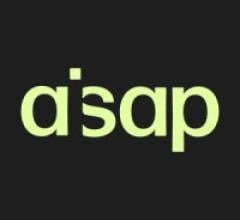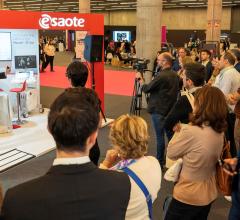March 8, 2013 — As cardiologists assemble in San Francisco for the 2013 Scientific Sessions of the American College of Cardiology, they are faced with the challenge of how to handle the high volume of additional patients entering the healthcare system due to the Affordable Care Act.
To help meet this challenge, new eHD technology from Esaote encompasses a suite of technology advances and echocardiography applications that yield more efficient cardiovascular exams for patients of all ages and sizes. eHD technology will be demonstrated on Esaote’s MyLab Twice, MyLab Seven and MyLab Alpha ultrasound systems at ACC 2013, March 9-11 in booth #S-1523.
“Many new patients entering the healthcare system bring with them the burden of several years of unmet healthcare needs,” said Stephen Rubenstein, M.D., FACC, New York, N.Y. “If we can identify and treat cardiovascular problems in these patients early, there will be less pressure on the healthcare system later.”
“Through our work in collaboration with cardiologists around the world,” said Gordon Parhar, general manager of Esaote North America, “we’ve created a comprehensive set of echocardiography tools to help make timely and accurate characterizations of cardiovascular disease.”
Among the critical applications and technologies on display in the Esaote booth are:
- eHD Technology — New, integrated technology that refines each step in the imaging path. Transducer and beam former refinements extend depth penetration to aid in imaging larger patients. Other systemic refinements increase contrast, reduce noise and enhance Doppler sensitivity to improve image readability and facilitate efficient cardiovascular diagnosis.
- XStrainTM 4-D — A cost-effective method of improving the accuracy of quantitative data cardiologists use to determine how the heart is functioning. X-Strain 4-D is based on standard 2-D echocardiography and does not need the expensive volumetric transducerstypically used for 3-D strain imaging. The sonographer acquires standard, high temporal resolution 2-D views and the system creates a continuous motion model of the heart in 3-D space. Intuitive software allows cardiologists to interact with 4-D data and readily assess cardiac function, bringing economical myocardial quantification to the point-of-care.
- Prevention Suite — A suite of applications used to effectively detect early stage cardiovascular disease while patients are still eligible for non-surgical therapies. Applications in the suite measure coronary artery flow, the thickness of the carotid artery and track the mechanics of the heart.
“We see a wide range of age and body types in our practice,” said Rubenstein. “These comprehensive tools help us make studied, confident assessments so we can plan the best treatment path to help our patients lead more healthful and satisfying lives.”
For more information: www.esaoteusa.com


 August 27, 2024
August 27, 2024 








